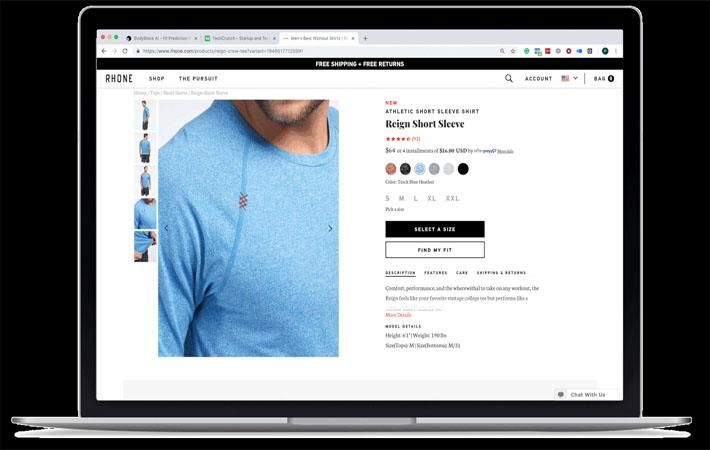
BodyBlock AI uses artificial intelligence (AI) and machine learning apart from the 3D scans. This enables its size finder widget to make better recommendations since its technology is based on body scans versus historical consumer buying behaviour, said a media statement by the company.
Poor-fitting clothes are no longer just an emotional hurdle for customers to overcome, it’s a $300-billion-dollar problem for apparel companies, with massive impacts on revenue, sustainability and operations. While 3D body scanning has always had an allure in apparel and retail, the logistics of scanning every consumer simply outweigh the benefits. BodyBlock AI’s predictive solutions allow the consumer and brand to get the value of a body scan without the operations, logistics and privacy burdens of actually capturing 3D body scans of consumers.
Customers who visit online retail websites using the Predict plugin can select ‘Find My Fit’ when shopping for clothes to begin the fit prediction process. Once selected, they will be prompted to enter a few basic inputs - gender, height, age and weight, which will generate a full 3D avatar to help with the fit process. Predict then extrapolates data from over 70 body measurements by comparing the customer’s inputs with its database of 3D body scans and recommends the appropriate product size based to fit as the designer intended.
“We all feel horrible when clothes don’t fit. For the first time in history, we have enough data to solve the problem of poor fitting clothes,” said Greg Moore, CEO of BodyBlock AI. “For example, our technology allows us to fit the right body into the right size for every product regardless of body shape or size – we’re also helping customers feel better and more confident about how clothes fit their bodies. This solution has substantial impacts to businesses with respect to revenues, time to market and sustainability.”
BodyBlock AI also offers BodyShape analytics to help brands analyse web performance from a new perspective. Once the Predict plugin is installed onto a retailer’s website, brands gain access to powerful insights on the body measurements of the customers visiting online stores. Rather than just seeing the product stock keeping units (SKUs), brands can see the height, weight, bust, waist, hip, inseam and other measurements of website visitors. These backend analytics give brands the power to see how clothing matches up with the actual body measurements of customers, whereby bridging the gap between the brand’s target customer segment and the customer’s body shape and measurements.
“If you want clothes to fit better, you need to start with the human body,” added Moore. “It’s unfathomable to me that this isn’t already the current standard. We know that bringing this technology to the digital space will solve the massive problem of poor fit, creating a win-win for brands and customers.” (PC)
Fibre2Fashion News Desk – India